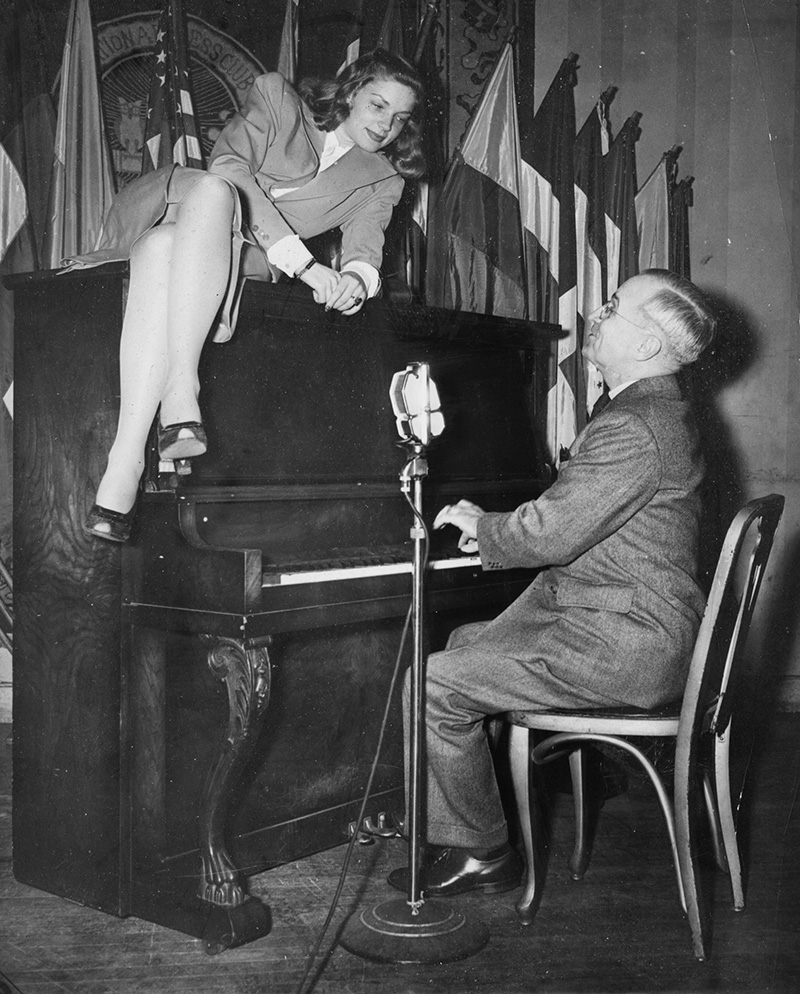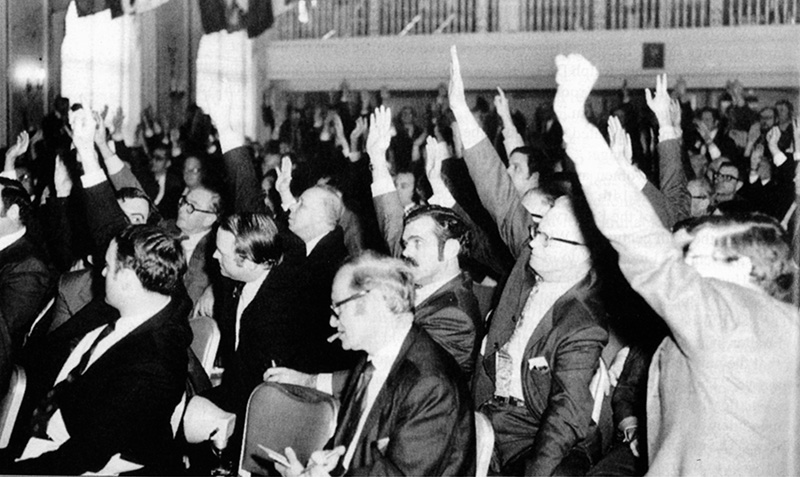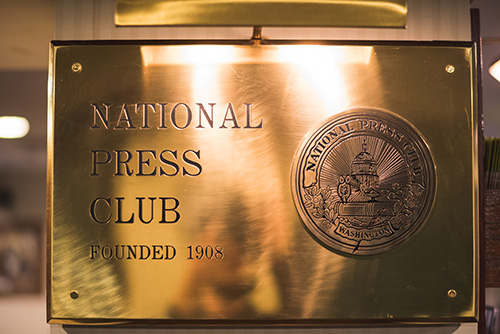
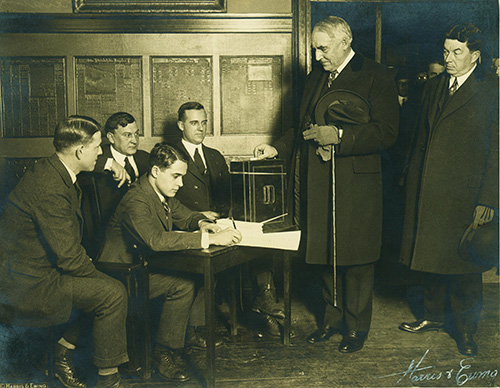

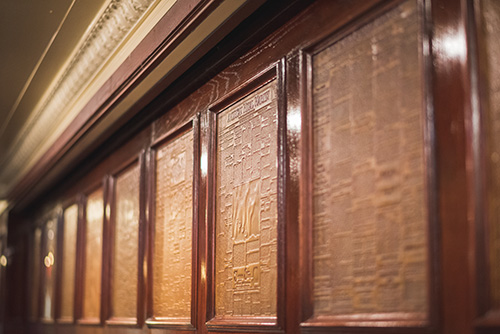
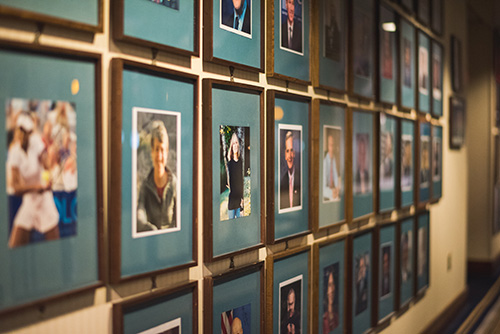
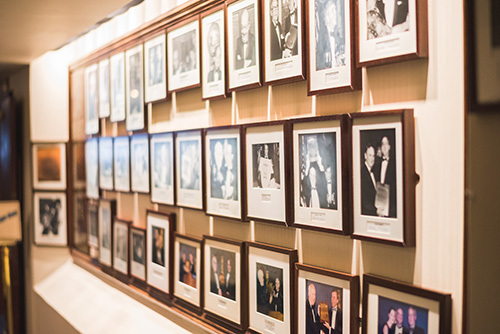
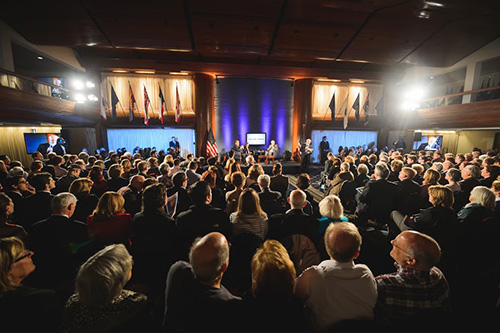
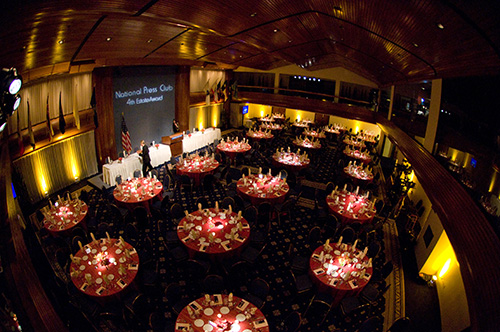
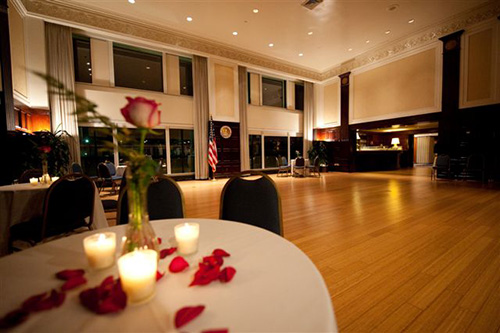
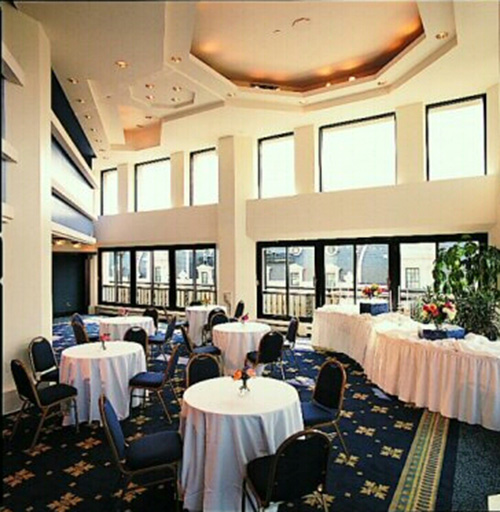
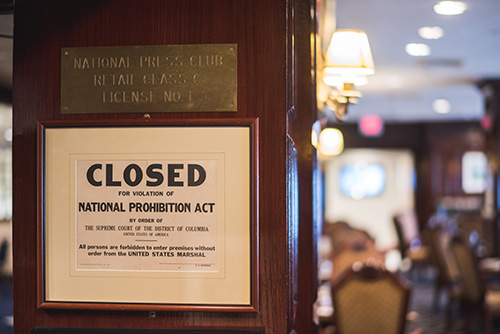
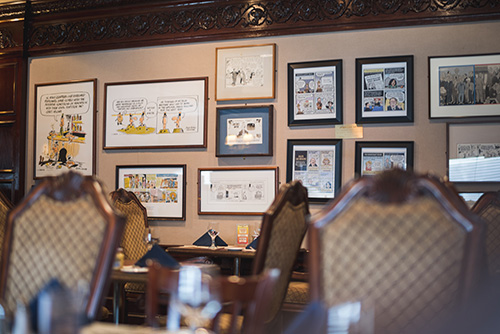
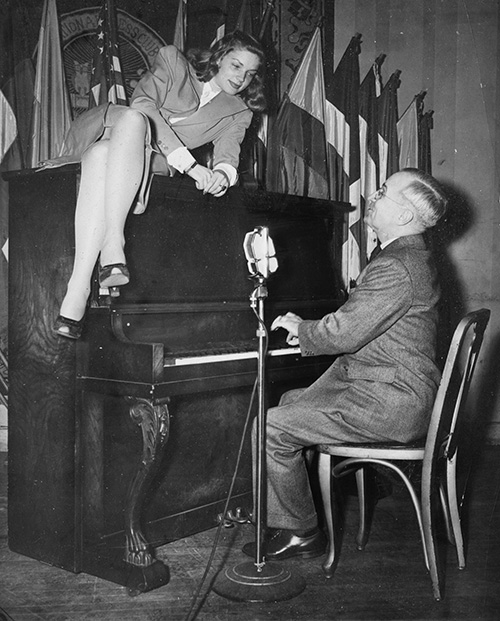
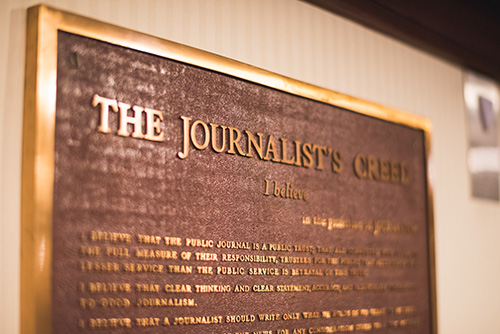
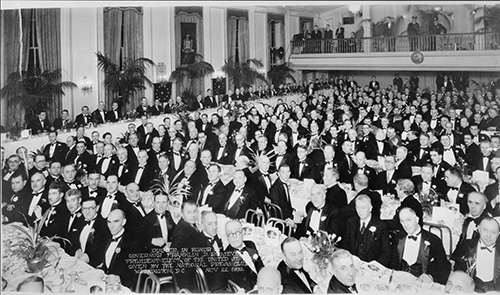
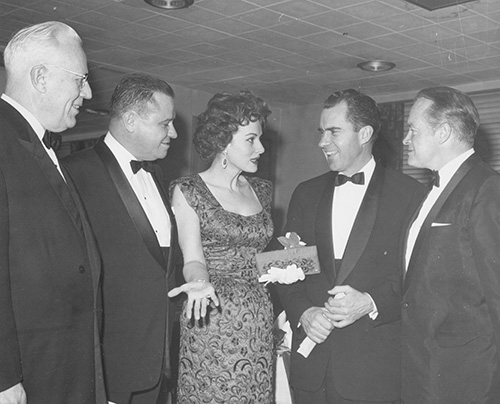
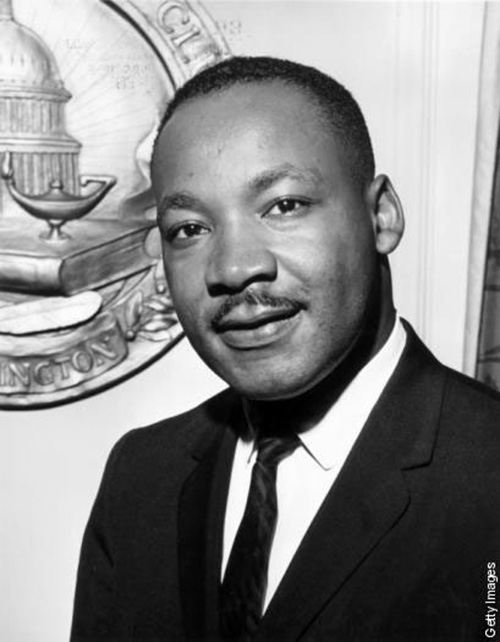
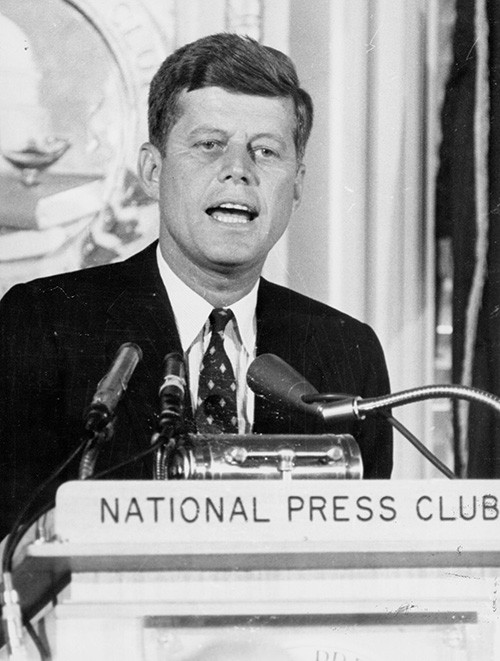
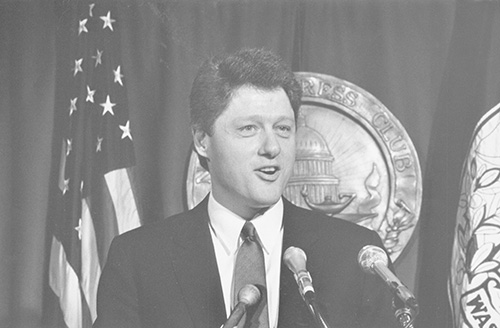
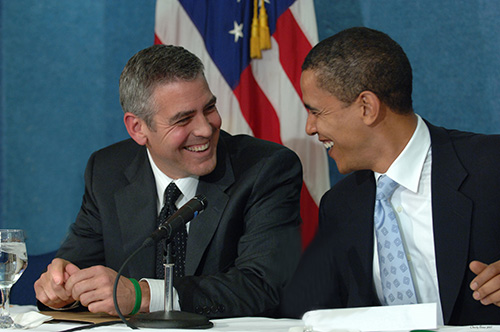
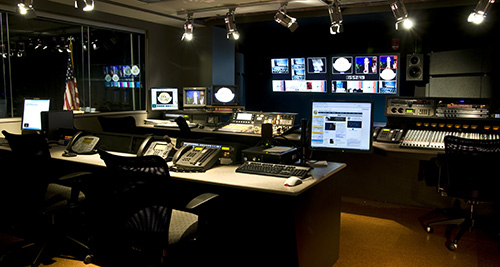
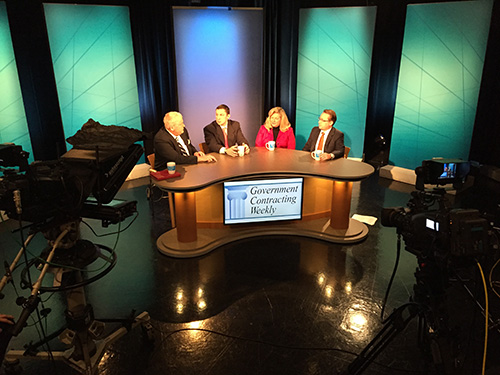

How it all began
On March 12, 1908, 32 newspapermen with $300 in their treasury and promises of support from 200 of their colleagues decided to create a private club for reporters to socialize and talk shop. Meeting just 17 days later in the parlor of the Willard Hotel, they framed a constitution for what they called “The National Press Club.” There were 34 original members. The first Club president was William P. Spurgeon, a reporter at The Washington Post.
The National Press Building
The current home of the National Press Club is its fourth. The first location was on the 2nd floor of a jewelry store at 1205 F Street, which lasted only a year (1908-1909) as the Club expanded rapidly and had to move to larger space in a building at the corner of 15th & F Streets, known as the Rhodes Tavern (1909-1914). From 1914 to 1927, the Club was located in the Albee-Riggs Bank Building at 15th & G Streets. In the early 1920’s, the Club’s board proposed to build a high-rise (14 story) office building with a new National Press Club at the top. The concept was to create a singular home for the many Washington bureaus of newspaper offices which at that time were scattered along 14th and F Streets known as Newspaper Row. The new National Press Building opened in December, 1927 and was the largest private office building in Washington at the time - with a spacious National Press Club on the top two floors. The National Press Building is the only private office building in the nation with its own zip code (20045).
The National Press Club Lobby
The walls in the main lobby are decorated with leather mats of historic major American newspaper front pages dating back to the 1800’s, which include some of the most iconic headlines in history, including:
- “War! Oahu bombed by Japanese Planes” (Honolulu Star-Bulletin, Dec. 7, 1941)
- “Today is V-E Day” (New York Herald Tribune, May 8, 1945)
- “Nixon Resigns” (Chicago Tribune, August 9, 1974,)
- “Polio is Conquered” (Pittsburgh Press, April12, 1955)
Speakers Hall (Ballroom Corridor, 13th Floor)
Features autographed headshots of recent and past speakers appearing at the Press Club, including Donald Trump, Alec Baldwin, Ken Burns, Mikhail Gorbachev, Ronald Reagan, Elizabeth Taylor, Colin Powell, Louis Armstrong, Bill Clinton, Martin Luther King, Jr., Nelson Mandela, Bob Hope, Muhammad Ali, Sharon Stone, Benjamin Netanyahu and many more. Also featured are National Geographic photographer Donald J. Crump’s photograph of “The Last Salute” and a selection of George Tames historical works including “The Loneliest Job in the World”, “Turkey Shoot”, “Hitting the Wall” and “Johnson Treatment”.
Awards Hall (South Corridor, 13th Floor)
Features photos of past winners of the National Press Club’s Fourth Estate Award such as Walter Cronkite (CBS News), Helen Thomas (UPI), Simeon Booker(Johnson Publications), Christiane Amanpour (CNN), Tom Brokaw (NBC News) and Bob Woodward (The Washington Post). Also displayed are previous recipients of the National Press Club's annual journalism awards, along with special collections such as Pulitzer Prize winning photographs.
Rooms & Event Spaces
The Ballroom
Home to the National Press Club’s signature Luncheon Speaker Series, where presidents, kings, queens, prime ministers, Cabinet members, governors, members of Congress and influential leaders in business, entertainment, sport and society share their views on significant topics and current events with the media and the public.
Holeman Lounge
Named after Frank Holeman, reporter and correspondent for the New York Daily News, who was Club president in 1956.
First Amendment Lounge
Named after the First Amendment to the U.S. Constitution, which guarantees freedom of the press.
Bloomberg Room
Named after Michael Bloomberg, creator of Bloomberg wire service and former Mayor of New York City, who donated $100,000 to the Club’s library.
Murrow Room
Named after the legendary Edward R. Murrow who practically invented broadcast journalism as the head of the CBS News London bureau during World War II.
White Room
Named after Margaret Bourke-White, a renowned photojournalist.
Lisagor Room
Named after Peter Lisagor, Washington bureau chief of the Chicago Daily News and one of the most respected and best-known journalists during his career in Washington.
Zenger Room
Named after Peter Zenger, a journalist in colonial New York, who was sued for libel by the British governor. The governor lost the case, which set the precedent that truth was a defense against libel charges.
Fourth Estate Room
Named after the nickname for journalism coined by Edmund Burke in Great Britain. It referred to the three “estates” of Parliament — the clergy, the nobility and the commons. Burke, noting reporters in the gallery covering his speech, said "there sat a fourth estate far more important than they all."
Winners Room
Named for the winners of the Club’s Fourth Estate Award, the lifetime achievement award for people who had contributed the most to the profession of journalism over a lifetime career.
The 14th Floor
The 14th Floor of the National Press Building is restricted to National Press Club Members Only. On display at the top of the stairs is an exact replica of the Norman Rockwell painting “Visit to a Country Editor” housed in the original artwork’s frame. The mural-like painting, which first appeared in The Saturday Evening Post in 1946, commemorates Rockwell's visit to the Monroe County Appeal, a small-town newspaper in Paris, Missouri. Rockwell took photos of the setting and then assembled the composition back in his studio, inserting himself into the painting. It is one of the rare Normal Rockwell paintings in which the artist is portrayed. The original artwork was donated to the National Press Club by Rockwell during a visit to the Club in the early 1970s. The artwork was later sold by the Club via Christie’s Auction House for $10.2 million, with a portion of the proceeds going to support programs of the Press Club’s nonprofit Journalism Institute.
The Reliable Source
The Club’s Members-only Bar & Restaurant, where reporters and sources frequently meet for lunch or cocktails to talk about the issues of the day, background on stories and to build relationships... off the record, of course!
The Truman Lounge
In February of 1945, then Vice President Harry S. Truman visited the Club during one of the “NPC Canteens” for enlisted soldiers during WWII. The Vice President sat down to play the piano to entertain the troops. Movie star Lauren Bacall unexpectedly hopped on top of the piano to join in the revelry. The image was quickly captured by legendary photojournalist Max Desfor, and the photo originally published in the May 7, 1945 edition of Life Magazine. The photograph landed Truman in hot water with his wife Bess. The incident also led a new policy at the National Press Club which prohibits any photo or video being taken on the members-only 14th floor of the Club. (This policy still is still in effect - put away your iPhones!)
The President's Office
Each year the National Press Club elects a new president, typically a working journalist, voted in by his or her peers for a one-year term. The president works out of the 14th Floor of the Club, overseeing all programming of Club events, committee functions and leadership roles, including oversight of the Board of Governors who manage the Club’s membership and business operations. More information on the current president is here and a list of past National Press Club past presidents is available here.
Presidential Hall
The 14th floor corridor features a series of photos taken of past, sitting and future Presidents of the United States. Among the highlights is Associated Press photograph Henry Burroughs unpublished photograph of President Franklin D. Roosevelt seated in his wheelchair on the House floor in 1945. William H. Taft was the first President of the United States to visit the Club in 1910. President Taft’s reason for stopping by was that he was lonely and wanted to visit his neighbors. All U.S. Presidents are inducted as honorary members of the Club. President Warren G. Harding qualified to become a Journalist member and voted in the 1921 Club elections due to his other full-time job as a newspaper publisher. President Harding visited the Club frequently to play cards and reveal issues within his cabinet, but always “off the record.” Franklin D. Roosevelt’s appearance at the Club shortly after he was elected in 1932 was the inspiration for the National Press Club luncheon series that remains its marquis program.
Significant Dates in National Press Club History:
1908 – National Press Club founded
1910 - President William H. Taft visits the Club
1916 – Woodrow Wilson becomes the first sitting U.S. President to give a formal speech at the National Press Club
1926 - President Calvin Coolidge lays the cornerstone for the National Press Building, the current home of the Club.
1932 - President Franklin Delano Roosevelt speaks at a National Press Club dinner in his honor. Soon after, the Club decides to start the Luncheon Speakers Program.
1938 – Eleanor Roosevelt became the first woman to speak at a Club luncheon.
1948 - Club votes to accept broadcast journalists as members
1955 - Club votes to accept black journalists as members
1959 - Female journalists are allowed to sit in the Ballroom to cover Nikita Khrushchev’s luncheon. Prior to 1959 women were only permitted to cover events from the balconies.
1962 - Reverend Martin Luther King, Jr. is the first black man to speak at a Press Club Luncheon
1971 - Club votes to accept female journalists as members
1973 - Walter Cronkite is awarded the inaugural Fourth Estate Award.
1980 - C-SPAN televises its first NPC luncheon
1982 – The first female NPC president is elected; Vivian Vahlberg of The Daily Oklahoman
1984 - Helen Thomas (United Press International) is the first woman journalist, and the first wire reporter, to receive the Fourth Estate Award.
1989 - Polish democracy leader Lech Walesa declares the end of the Cold War at a packed NPC luncheon.
1992 - H. Ross Perot announces from the National Press Club that he is running for president of the United States. The NPC library receives over 10,000 orders for the recording of his speech.
1998 - Matt Drudge speaks at NPC luncheon, breaking new ground for online journalism
2001 – The Press Club serves as the “situation room” for hundreds of journalists working in the National Press Building during 9/11 terrorist attacks on Washington, DC; the NPC provides free meals to journalists throughout the day while the building is on lockdown.
2006 - National Press Club Broadcast Operations Center opens, providing live broadcast and online streaming of public events from the National Press Club to a global audience.
2015 – A secret meeting organized by the International Consortium of Investigative Journalists is held in a private room at The National Press Club. It is the first meeting of the group behind the leak of the Panama Papers - more than 11.5 million financial and legal records exposing a system that enables crime, corruption and wrongdoing hidden by secretive offshore companies.

